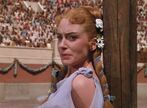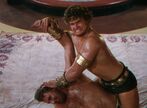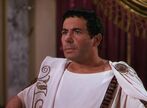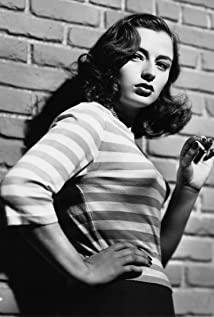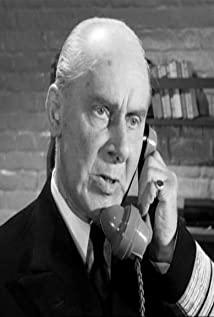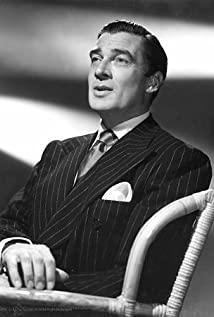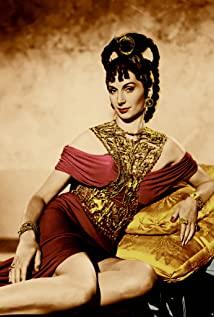The movie once again told me that history is written by victors.
The film is based on the long historical novel "Where Are You Going" published in 1896 by the Polish writer Shankowitz. Poland is a country deeply influenced by Catholicism. Writers who grew up in such an environment will naturally portray Christianity as a positive image in the content of their novels, and they will become villains when they sing, burn Rome on fire, and persecute Christians if they are not doing their jobs. The label on Emperor Nero.
Of course, the novel "Where Are You Going" was written by the writer in the context of his home country at the time, which has a metaphorical meaning. Putting this level aside, just looking at the content of the Roman period shown in novels and movies still makes me feel that history is the history of victors.
It is described in the film that Nero persecuted Christians because he wanted to pass on the hostility of the people towards him burning Rome. Nero's persecution of Christians was true, and his cruel methods were indeed an out-and-out tyrant. But did Nero set fire to the city of Rome? In the film, Nero commanded the officers to secretly set fire, in order to build his ideal Roman city on the ruins, even the sand table model was made.
In fact, there is no definite evidence that he instigated Rome to burn. But because of the large area he wanted to build a luxurious palace, Rome no longer had enough space to build it, and more importantly, the area of the burned area coincided with the area of the palace he wanted to build. After the fire broke out, as Nero who likes to sing and play piano, he actively participated in post-disaster reconstruction and rescue, which made people confused. Especially after his downfall, a firefighter from Rome (there were firefighters in ancient Rome in the 1st century AD, were they particularly powerful?) came out to testify that Nero set the fire. Although it may be an act of falling into the ground, it aggravated the people’s misgivings. .
In Europe in the 19th century, the power of Christianity was still very strong. At that time, no one cared about and digged into the historical facts of ancient Rome. After all, after the fall of ancient Rome, it was replaced by the dark Middle Ages for more than a thousand years, the Middle Ages in which Christianity triumphed. The age when Christianity is the absolute protagonist, except for the pro-Christian Constantine and others in the later period, other ancient Roman emperors have become abominable, not to mention being the first in power to persecute Christians in the history of ancient Rome, which will naturally be described. Is more brutal.
However, just watching a movie and being immersed in the setting of the plot is also a good thing. The text I wrote is neither a film review nor a historical review, but just a little bit of my own feelings. However, there are some details in the film, and I hope that writing them can help the viewers to understand more.
1. The hostage phenomenon in ancient Rome
The heroine in the film, Lijier, is a hostage sent by Liji to Rome. Why does Rome have hostages from other countries? Because the Roman Empire at that time spanned three continents in Europe, Asia and Africa, and was a full superpower. It was a bit like a federal government in nature, with a unified head of state, but many regions were self-governing bodies. The predecessors of these self-governing bodies were small countries or tribes outside of Rome. After reaching the conditions of belonging with Rome, Rome allowed them to continue their autonomy in the past, but with more intervention. The most typical representative is the city-state self-governing body of Athens. Usually the local government sends the leader's child to Rome as a hostage. These hostage children basically live in the upper class of Rome, receive a good education with the children in these families, and return to the local government to serve as chiefs or important positions when they grow up.
2. Bathing in ancient Rome
The Romans' love for bathing is simply beyond addtion. The generals in the film went back to the court, visited the retired general, Lijier's adoptive father's house, and took a bath in the other's house by the way. I don’t know if everyone is paying attention, what is the scrubber holding in his hand? That was the scrubbing tool of the ancient Romans, which looked a little scary, like a machete.
The ancient Romans liked bathing Jane to the point where it couldn't be more. Rich and powerful people will set up a small bath in the house. In the city of Rome, there is a large bath for the people to bathe. There are three pools of hot water, warm water, and cold water to choose from in the large public bath. Instead of calling it a large bath, it is a bathing and entertainment center. According to the design of the baths at that time, the baths not only had baths, but also many supporting facilities, such as libraries, art galleries displaying relief paintings, stadiums, study areas, large gardens, etc., integrating leisure and entertainment. For such a multifunctional luxury bathing center, the ticket is only equivalent to the price of a glass of wine + a piece of bread. To put it bluntly, it is to give benefits, which was called "the palace of the poor" by the Roman people at that time. Except for the capital Rome, other cities in the Roman Empire basically have public baths of varying sizes. It's just that these masterpieces of the ancient Roman period, which were regarded as symbols of darkness and corruption in the Middle Ages, were almost destroyed.
3. All roads lead to Rome-Roman Avenue
At the beginning of the movie, the male protagonist returns triumphantly, marching on Apia Avenue. Apia Avenue is known as the Mother of Romanesque Avenues, Queen's Avenue, and is the most important avenue in the Roman period. It is said that all roads lead to Rome, because with the city of Rome as the core, many avenues have been built, with a total length of 250,000 kilometers. The ancient Romans paid great attention to "passing". The construction of the avenue was first of all for military purposes to facilitate rapid marching. Therefore, the roads were hardened to facilitate the movement of carriages and chariots. In order to adapt to the chariot, the road surface is designed as a two-way two-lane, plus the sidewalks on both sides, the width is 11 meters, and the drainage system is built, and the planting of trees on both sides of the avenue is prohibited to reduce the damage of the roots to the underground drainage system. . Basically, it can be regarded as an ancient highway. The Apia Avenue in the movie is like the scene when the Roman Empire was unable to maintain the Avenue in the later period.
What's even more powerful is that this "highway" is like the arteries of the human body, spreading throughout ancient Rome, whether it is in Italy, North Africa, the Middle East, Gaul, and Britain, all cities and towns are connected by avenues. In a large country with a vast territory, moving far away will take time and effort, not to mention the ancient times when only horse-drawn carriages existed. In order to facilitate people to use the boulevard, the boulevard is equipped with different large and small "service areas" according to a certain mileage. The larger ones can provide accommodation, horse changing, catering, and bathing. The medium-sized ones can change horses and meals, and the smaller ones can. Catering and more. In ancient times when the exchange of information was not smooth, how did travelers know where there are inns and inns? In ancient Rome, there was a silver water cup, which was engraved with the locations of various "service areas" and the types of services that could be provided. This silver cup is sold in various "service areas". Passengers only need to buy one (I forgot the price, but it is not expensive), drink water to see the contents of the cup, and prepare for the next stop in advance. Of course, it’s okay if you want to make a travel “guide” before you leave. At that time, a “travel map” was sold, which clearly marked the location, distance, and distance between the “service areas” of the avenue, which was very convenient. .
4. The emperor who killed the mother-Nero
It is mentioned many times in the movie that Nero killed his mother. Why did Nero kill his mother?
Nero’s mother was the little Agrippina (her mother was the Grand Agrippina, to distinguish it), the wife of the former emperor Claudius, and the niece of Claudius (somewhat Chaos...), is the descendant of Augustus, the founding emperor. Nero was not the son of Claudius. The little Agrippina was married before she married Claudius and had Nero (the remarriage of women in the upper class of ancient Rome was commonplace, and even very popular).
After a political struggle, Agrippina succeeded in making her son emperor. And this woman is not just as simple as "proud of her son", her ambition is to become a queen. In order to approach the military and political power step by step, the little Agrippina began to win over the military. Everyone knows that the German city of Cologne originally meant "Colonia", meaning a colony. Cologne was an important town guarding the Rhine defense line in Rome at the time, and the birthplace of the little Agrippina was Cologne. Little Agrippina, through some political means, ordered the veterans to move to Cologne as a colonial city, and named Cologne "Colonia. Agrippina", which means "Agrippina" "city of.
Nero, who had just ascended to the throne, was still young, assisted by the Empress Dowager Agripina. When Nero grew up slowly, he was unwilling to be a puppet and wanted to get rid of the control of his mother, Agripina. But how can the empress dowager easily delegate power. So Nero simply wanted to get rid of his mother.
The first killing of the mother was very interesting. Nero designed a trap for her mother's death by an "accident". At this time, he and his mother had been in conflict for a long time, and they didn't have much contact with each other. One day, on the grounds of celebrating the birth of Athena, the goddess of wisdom, he invited his mother to a villa near the military port of Miseno in Italy. After the banquet, he sent his mother aboard the ship back to Rome. This ship was a "death ship" with a hole in the bottom of the ship. Nero sank soon after going out to sea and killed Agrippina. Unfortunately, the sea was very calm that day. Without the help of good wind, the boat began to sink before it went far. Agripina was very watery and was rescued by a nearby fishing boat. Agrippina, who had landed ashore, felt the strangeness in this, and knew that it was her son who killed him, so she wrote to her son to tell her that it was OK. Knowing that his mother would definitely not stop there, Nero ordered someone to break into his mother's villa and killed her directly. Since then, Nero has finally taken over the power.
But no human beings can forgive this kind of conscience behavior of killing mothers. At the time, 22-year-old Nero suffered a lot. He later dreamed of his mother coming to "chase his life" almost every night. At the Senate meeting, he accused his mother of ordering people to assassinate him in order to take over the power. Although the members believed, Nero couldn't convince himself and could not face it calmly.
View more about Quo Vadis reviews



